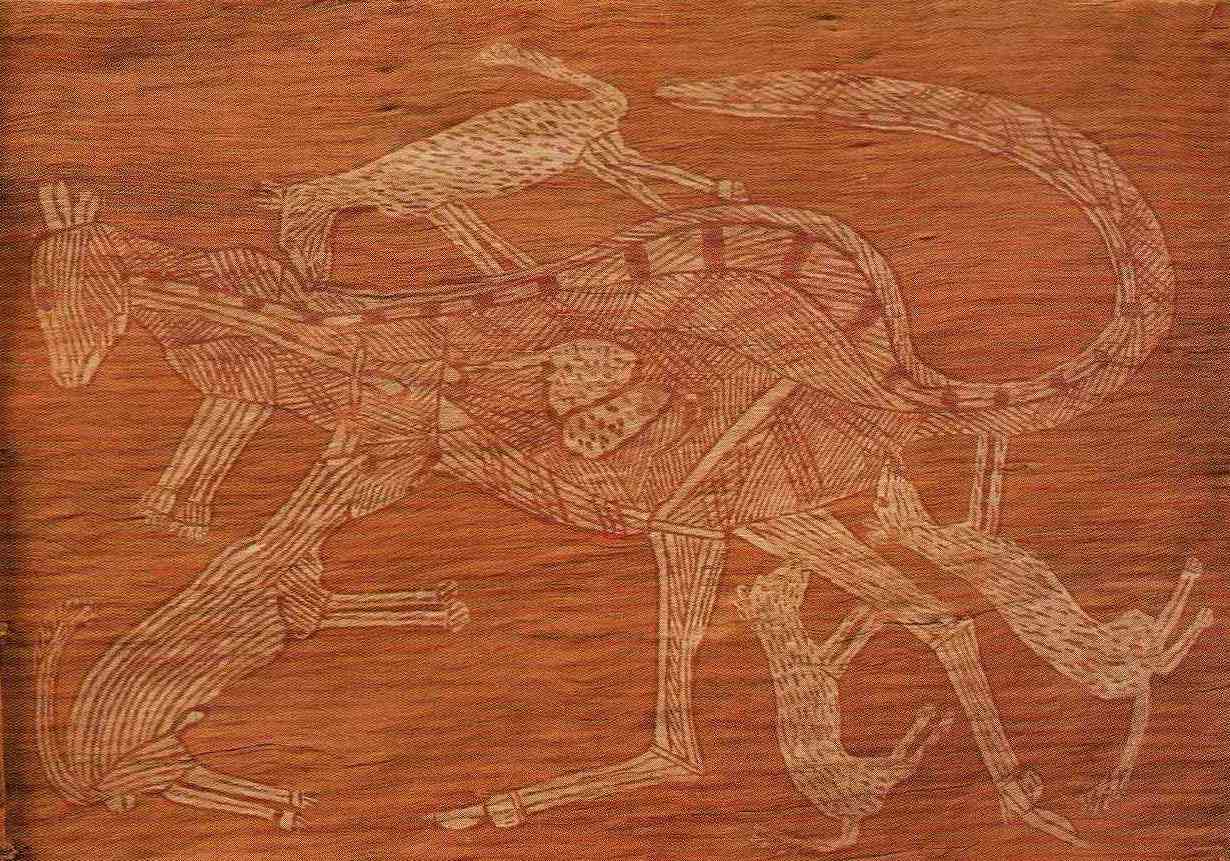Wally Mandarrk Aboriginal Art
Indigenous Australian Artist Wally Mandarrk is an best known for his depictions of Mimih spirits and Wayarra spirits. He painted on large sheets of bark using natural ochre and orchid juice binding agents.
Mandarrk painted most of his barks in the late 70’s and early 80’s. His artworks are collectable but vary considerably in value. If you want an estimate of what your Wally Mandarrk painting is worth please feel free to send me an image. I do buy Mandarrk paintings or sell them on a commission basis.


Biography of Wally Mandarrk
Born around 1915, Wally Mandarrk grew up in south-central Arnhem Land. He was a Barabba clan man of the Balang skin group. Wally grew up at Marlkawo near Lofty Bardayal Nadjamerrek’s country of Kabulwarnamyo. He lead a traditional lifestyle and was a custodian to important traditional dreaming’s. Wally did not meet a European until 1946 when he began work at a sawmill in Maranboy. In the 1960s and 70s he lived at a number of bush camps including one at Mankorlod. Later in the early 1970’s he established Yaymini outstation with his family in remote Arnhem escarpment country. At Yaymini he lived with another aboriginal artist John Namerredje Guymala. They would work together and then sell their artworks at the Maningrida art center. The majority of the known artworks of Mandarrk are from this period
Wally Mandarrk was a man of significant status who had undergone initiation rituals and ceremonies. He had special traditional powers known as mankordang. These powers allowed Mandarrk to travel distances at an unnaturally fast pace and conduct sorcery. Mandarrk had a strong relationship with traditional Mimih spirits. Mimih spirits populated his homeland and are prevalent in Aboriginal spirituality.
Wally Mandarrk passed away in 1987.
Wally Mandarrk Early Style
Mandarrk was one of the last artists of the Arnhem Land area to engage in Arnhem Land Rock Art.
Before painting on bark for sale to Europeans Wally Mandarrk was a traditional rock shelter artist. He is known to have painted in a cave in the Cadell River region around 1965. This painting of a Rainbow serpent documented by anthropologist Eric Brandl.
Very few of Wally’s barks are in the traditional x-ray rock shelter Oenpelli style. The majority of his bark paintings are filled with cross-hatching and do not show internal organs. Some of these early barks include a dot filled sections in a similar manner to Mick Kubarrku.
His earlier bark paintings have a strong correlation to rock art in both the materials used and subjects depicted.




Wally Mandarrk Peak Carreer
In most of his later works he separates areas of cross-hatching with lines of dots. Mandarrk maintains the monochrome red ochre background throughout his cannon of known works. Mandarrk favored crosshatching white with white, which gives many of his artworks a distinct striped appearance. His alignment of the diagonal bands of cross-hatching is often quite uni-directional and semi vertical
His stocky figures are more realistically proportioned than other artists. Figures are often depicted with slightly beak like mouths. Many figures have indistinct eyes.
Other works by Mandarrk depict animals such as crocodiles, kangaroos and birds as well as the Rainbow Serpent.
Due to Mandarrk using orchid juice as a binder for his ochre his paintings are prone to pigment loss and rubbing.
The Rainbow Serpent
Aboriginal people believe that Ngalyod, the Rainbow Serpent, created many sacred sites in Arnhem Land. Characteristics of Ngalyod vary from group to group and also depend on the site. He can change into a female serpent, and has both, powers of creation and destruction. Ngalyod is most strongly associated with rain, monsoon seasons, and the rainbows that arc across the sky like a giant serpent. He is most active in the wet season. In the dry season, he rests in billabongs and freshwater springs. When he rests he handles the production of water plants such as waterlilies, vines, algae, and cabbage tree palms.
When waterfalls roar down deep gorges, that Ngalyod is calling out. Large holes in stony banks of rivers and cliff faces are his tracks.
The rainbow serpent is deeply respected because it will swallow people who offend him. If Ngalyod swallows people during floods that he has created, he regurgitates them and they transform into new beings by his blood.
Aboriginal people respect sacred sites where the Rainbow Serpent resides. Near these sites, cooking is not allowed. Cooking near the resting place of the great serpent will incur his wrath. Ngalyod can cause sickness, accidents, and great floods, which make it easier for him to swallow his victims.
Although Ngalyod is generally feared throughout Stone Country, he is a friend and protector of the tiny Mimih Spirits.

Other Aboriginal Art and Artists
All images in this article are for educational purposes only.
This site may contain copyrighted material the use of which was not specified by the copyright owner.
Wally Mandarrk artwork Images
The following images are of the Artworks of Wally Mandarrk. It is not a complete list of his works. They do however give a good idea of the style and above all the variety of this Aboriginal Artist.




























